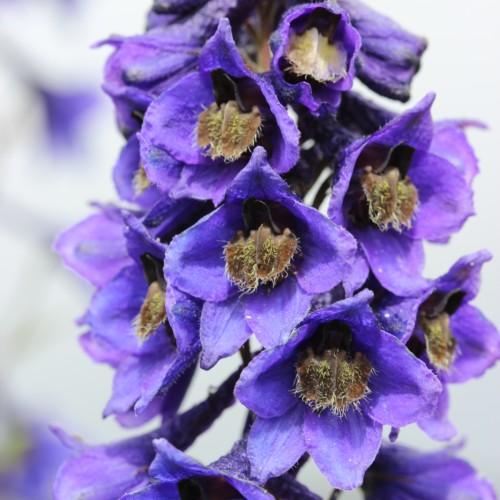
candle larkspur
Delphinium elatum AURORA DEEP PURPLE
Also Known As - perennial larkspurCycle:
Herbaceous Perennial
Watering:
Average
Hardiness Zone:
3 - 7
Flowers:
Flowers In Summer
Sun:
Full sun, Sheltered
Soil:
Well-drained
Fruits:
Fruits In Autumn Ready In Summer
Leaf:
Yes
Growth Rate:
High
Maintenance:
Moderate
Poisonous To Humans:
Yes
Poisonous To Pets:
Yes
Care Level:
Medium
watering
Candle larkspur plants should be watered regularly to keep the soil moist. They should be watered every 7-10 days and should be given enough water to reach the lowest roots of the plant. During hot summer months, the plants will require more frequent watering, preferably every 5-7 days. The amount of water should depend on the specific needs of the plant, as well as the climate and season. Generally, the soil should be thoroughly soaked to a depth of at least 4 inches. However, if the soil is very sandy, the plants should be watered more deeply. Watering should be avoided during cold winter months to avoid root rot.
sunlight
Sunlight is important for growing healthy candle larkspur (Delphinium elatum AURORA DEEP PURPLE) flowers. This hardy perennial prefers full sun, meaning the plant should get direct, unfiltered sunlight for at least 6 to 8 hours per day. Since candle larkspur can tolerate partial sun, it can be planted in light shade. In addition, candles larkspur enjoys cooler morning sun and shade during the hottest parts of the day. Too much sunlight can fry delicate flowers, so a balance of shade and sunny conditions is usually recommended.
pruning
Candle larkspur (Delphinium elatum AURORA DEEP PURPLE) should be pruned once a year during the early springtime. Some pruning of this plant species will be necessary to keep it looking its best. Lightly trim any overgrown stems down to a desirable size and shape. This will help to keep your plant looking neat and tidy. In addition, any dead or damaged stems should be removed. Pruning should be done with clean pruning shears to avoid spreading disease. Be sure not to remove more than 1/3 of the at 1 time. Removing too much can damage the plant and lead to poor flowering.
